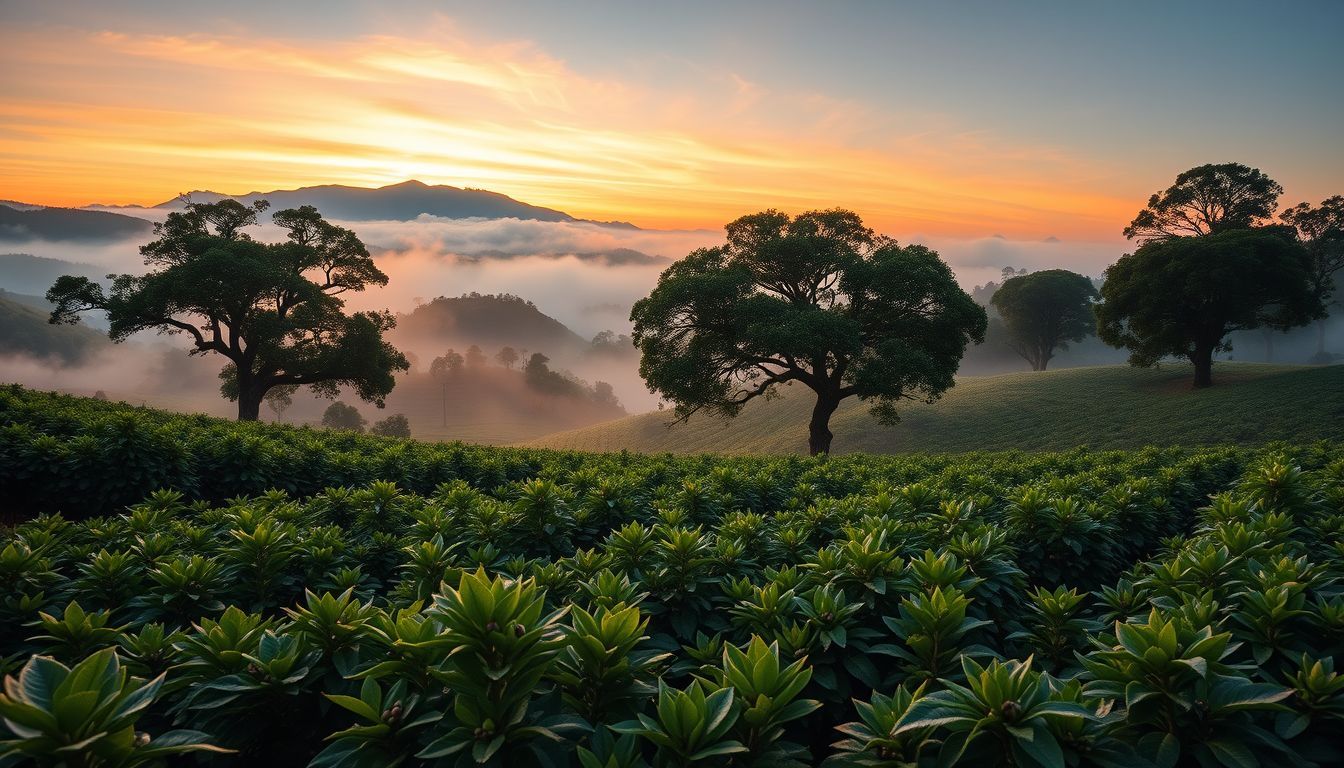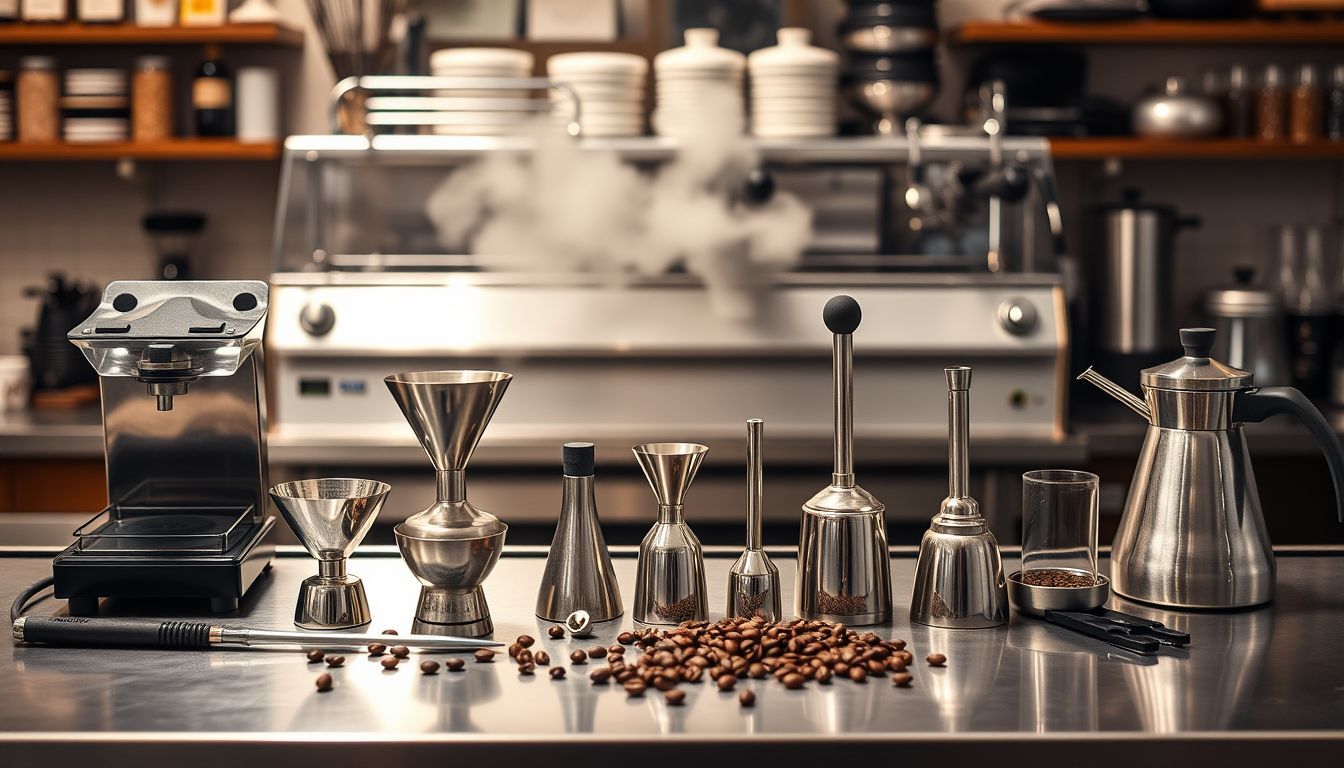The Influence of Local Climate Patterns on Coffee Bean Development and How Home Brewers Can Adapt Their Techniques
Explore how local climate patterns shape coffee bean development and discover how home brewers can adjust their techniques to honor these unique flavors.

Amazon Affiliate Disclosure
This post contains affiliate links. If you purchase through these links, we may earn a small commission at no additional cost to you.
The Influence of Local Climate Patterns on Coffee Bean Development and How Home Brewers Can Adapt Their Techniques
In the quietude of dawn, as the first light caresses the earth, a ritual unfolds in countless homes—a cup of coffee, steaming and fragrant, cradled between hands seeking warmth and wakefulness. Yet, this humble brew carries within it the whispers of distant lands, the stories of sun and rain, of soil and wind. Each bean is a testament to the climate that nurtured it, a silent witness to the rhythms of nature.
The Dance of Climate and Coffee
Coffee, that cherished elixir, is profoundly influenced by the climate in which it grows. The interplay of temperature, rainfall, altitude, and sunlight orchestrates the symphony of flavors that each bean embodies.
Temperature's Embrace
The warmth of the sun accelerates the ripening of coffee cherries, leading to beans that may lack depth, their flavors hurried and undeveloped. Conversely, cooler climes slow this process, allowing sugars to develop more fully, resulting in a cup that sings with complexity and sweetness. The delicate Arabica variety, in particular, thrives in cooler temperatures, where its nuanced flavors can flourish.
Rainfall's Rhythm
Rain, the lifeblood of the land, dictates the growth cycles of coffee plants. Consistent, gentle rains nurture steady development, while erratic patterns can disrupt flowering and fruiting, leading to uneven ripening. Regions blessed with well-distributed rainfall often produce beans with balanced acidity and body, a harmonious reflection of their environment.
Altitude's Ascent
As one ascends to higher elevations, the air grows thinner, the temperatures cooler. Coffee grown in these lofty realms tends to mature slowly, a patient journey that culminates in beans of remarkable density and flavor complexity. The high-altitude coffees of Ethiopia and Colombia are celebrated for their bright acidity and intricate taste profiles, a tribute to the heights at which they are cultivated.
Sunlight's Caress
The dappled light filtering through the canopy of shade trees creates a microclimate that protects coffee plants from the harshness of direct sun. This gentle illumination fosters a gradual maturation, enhancing the development of sugars and acids within the beans. Shade-grown coffees often exhibit a refined sweetness and a delicate balance, a testament to the nurturing embrace of their environment.
The Impact of Climate Change
The delicate balance between coffee and climate is increasingly threatened by the specter of climate change. Rising temperatures and shifting weather patterns disrupt traditional growing regions, challenging farmers and altering the very essence of the beans we cherish.
Pests and Diseases
Warmer climates have expanded the range of pests like the coffee berry borer, a tiny beetle that can devastate crops. Similarly, diseases such as coffee leaf rust thrive in these new conditions, posing significant threats to yields and quality. (climate.gov)
Shifting Growing Regions
As traditional coffee-growing areas become less suitable due to climate shifts, farmers are compelled to seek higher altitudes or different latitudes, disrupting established practices and communities. This migration not only affects the livelihoods of growers but also the flavor profiles of the beans produced. (dabov.us)
Adapting Brewing Techniques to Climate-Influenced Beans
For the home brewer, understanding the climatic origins of coffee beans offers an opportunity to honor their unique characteristics through thoughtful brewing practices.
Embracing Acidity
Beans from high-altitude regions often possess a bright acidity. To highlight this, consider brewing methods that preserve these vibrant notes. Pour-over techniques, with their precise control over extraction, can accentuate the crispness inherent in these beans.
Balancing Body
Coffees from lower elevations or warmer climates may exhibit a fuller body and deeper, earthier flavors. Brewing methods like the French press, which allow more oils and fine particles into the cup, can enhance these rich profiles, offering a satisfying depth.
Highlighting Sweetness
Beans nurtured under consistent rainfall and moderate temperatures often develop pronounced sweetness. Espresso brewing, with its concentrated extraction, can amplify these sugary notes, creating a cup that resonates with natural sweetness.
Adjusting to Roast Profiles
Climate influences not only the growth of coffee but also how beans respond to roasting. Beans from different climates may require adjustments in roasting time and temperature to unlock their full potential. As a home brewer, selecting beans roasted to complement their climatic origins can elevate your coffee experience.
A Mindful Sip
Each cup of coffee is a journey—a voyage through the climates that shaped its beans, a narrative of the earth's diversity. By understanding and adapting to these climatic influences, home brewers can transform their daily ritual into an act of mindfulness and appreciation. In every sip, we can taste the sunlit hills, the misty mountains, the rhythmic rains—a symphony of nature captured in a humble cup.
As we cradle our mugs, let us remember the delicate dance between coffee and climate, and honor it with every brew we craft.

Ben Carter
I spent the first part of my life learning the language of the wild—the rustle of leaves, the silence of snow, the resilience of a lone tree. In my writing, I try to translate that language, exploring how the landscapes around us shape the landscapes within us. My stories are quiet, but I hope they speak to a deeper part of you.

